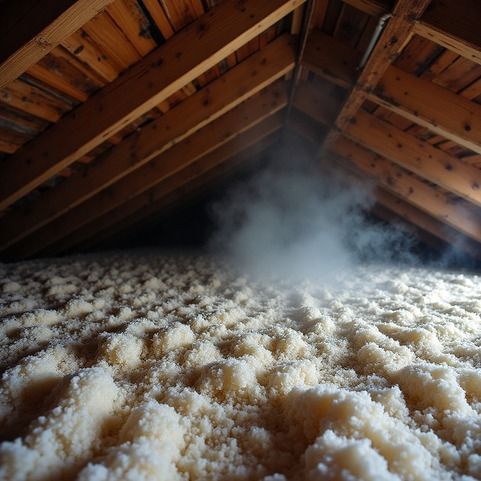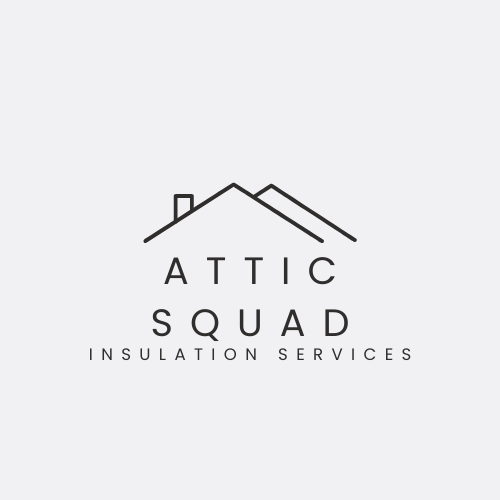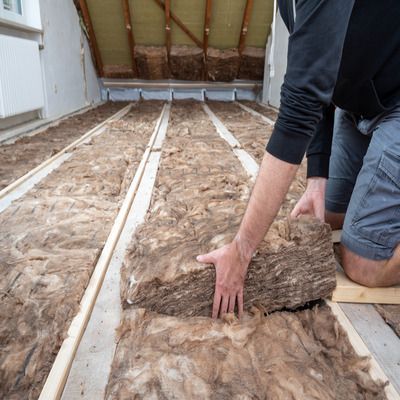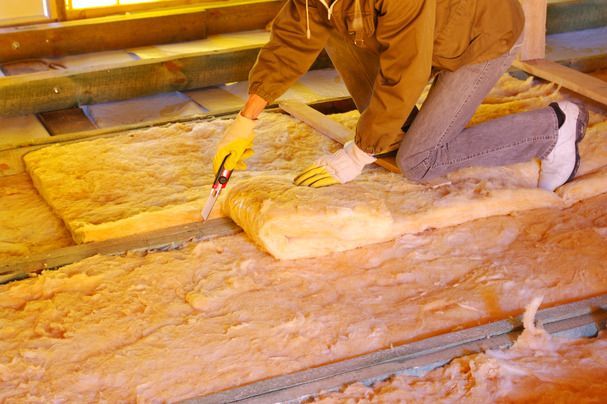Attic Insulation After Fire
Importance of Replacing Attic Insulation After a Fire

Fire can ravage not just your home but also the integrity of your attic insulation. After experiencing a fire, it is crucial to understand that replacing your attic insulation is essential to ensure safety and restore energy efficiency in your home. Damaged insulation can harbor harmful toxins and severely compromise the structural integrity of your roof, leading to further issues down the line.
In the aftermath of a fire, the lingering effects can impact air quality and increase health risks. Moreover, outdated or fire-damaged insulation can cause energy inefficiencies, resulting in higher utility bills. Promptly addressing these concerns with professional insulation services can both enhance your home's safety and provide long-lasting benefits.
When considering the complex effects of fire damage, it’s evident that timely replacement of your attic insulation not only protects your home but also fosters a healthier living environment.
Key Takeaways
- Replacing attic insulation after a fire is vital for your safety and home efficiency.
- Damaged insulation poses health risks and can increase your energy costs.
- Professional insulation services can aid in making informed choices for your home.
The Impact of Fire on Attic Insulation
Fire can have a devastating effect on attic insulation, compromising its integrity and effectiveness. Understanding the nuances of fire damage, the types of insulation most affected, and the visible and hidden effects are crucial for homeowners seeking to ensure safety and efficiency after a fire incident.
Understanding Fire Damage
Attic insulation can be significantly compromised by fire exposure. Even if insulation appears unaffected externally, heat can alter its properties, reducing its fire resistance. Materials may become more susceptible to combustion due to the heat.
- Compressive Damage: Insulation that is compressed or charred can lose its efficiency.
- Chemical Degradation: Fire can release harmful chemicals in some materials, impacting air quality.
You should have a professional assess any insulation post-fire to determine if it meets safety standards.
Types of Attic Insulation Affected
Different types of insulation respond differently to fire. Here are some commonly used materials and their vulnerabilities:
Insulation Type Fire Resistance Fiberglass Naturally non-combustible but can be affected by intense heat. Cellulose Highly flammable; easily absorbs fire risks. Spray Foam Can burn and emit toxic fumes when exposed to fire. After a fire, cellulose insulation should be replaced immediately due to significant damage, while fiberglass may need close inspection for hidden issues.
Visible and Hidden Effects
Fire can leave both visible and hidden effects on insulation. You might notice:
- Discoloration or Charring: Signs of heat damage that indicate reduced effectiveness.
- Soot Accumulation: This can lead to health risks if not properly cleaned.
Hidden effects may include structural weaknesses within the insulation material that are not immediately visible. This can compromise energy efficiency and safety.
Having an expert evaluate your attic insulation will provide peace of mind and ensure your home remains a safe environment.
Health Risks of Fire-Damaged Insulation
Fire-damaged insulation poses significant health risks that can affect your indoor air quality and overall well-being. Understanding these dangers is essential for any homeowner facing this situation.
Toxic Residue and Air Quality Concerns
After a fire, insulation can become contaminated with toxic residues. These residues may include harmful chemicals and particulates released during combustion. Breathing in these substances can lead to a variety of health issues.
Key concerns include:
- Respiratory Problems: Inhalation of toxic particles can exacerbate conditions like asthma and bronchitis.
- Long-term Health Risks: Prolonged exposure may increase the risk of serious illnesses, including cancers.
Replacing fire-damaged insulation is crucial to restore safe air quality in your home. Removing contaminated materials helps eliminate lingering toxins and improves overall indoor conditions.
Allergens and Mold Risk
Fire creates moisture, leading to an increased risk of mold growth, especially in insulation. Mold thrives in damp environments, and when insulation is compromised, it can trap moisture.
Potential allergens include:
- Mold Spores: These can circulate in the air and trigger allergic reactions.
- Dust Mites: Damaged insulation may harbor dust mites, another common allergen.
Replacing your insulation after a fire not only removes mold and allergens but also mitigates future risks. Keeping your attic environment dry and clean is vital for maintaining a healthy home.
Structural and Energy Consequences
Damaged attic insulation can lead to significant structural issues and increased energy costs. It is essential to understand how fire or smoke can impact insulation performance and the overall integrity of your home.
Loss of Insulation Efficiency
After a fire, insulation may become charred or compromised, significantly reducing its effectiveness. Insulation plays a critical role in regulating temperature and maintaining energy efficiency. When it loses its insulating properties, you may experience increased heating and cooling costs.
The following factors contribute to this efficiency loss:
- Moisture Absorption: Insulation materials can absorb smoke and moisture, leading to degradation.
- Air Leakage: Damaged insulation may create gaps, allowing conditioned air to escape.
Replacing insulation ensures your home remains energy-efficient and comfortable.
Potential for Ongoing Damage
If you postpone replacing damaged insulation, you risk ongoing structural problems. Fire can weaken structural elements, allowing for potential issues such as mold growth or compromised air quality.
Key concerns include:
- Mold Growth: Moisture from damaged insulation can create an environment conducive to mold development, which poses health risks.
- Compromised Air Quality: Smoke particles may linger in damaged insulation, affecting indoor air quality.
Addressing insulation issues promptly can prevent further damage and protect your home’s structural integrity.
Why Replacement Is Essential After a Fire
After a fire, replacing attic insulation is crucial for maintaining safety and efficiency in your home. The damage caused by the fire and smoke can compromise insulation performance, leading to several long-term issues.
Restoring Home Safety
Following a fire, damaged insulation can pose serious health risks. Smoke can infiltrate insulation, embedding harmful particles that may remain even after cleanup efforts. This can affect indoor air quality and lead to respiratory issues over time.
Additionally, insulation that has been exposed to heat may not perform adequately in future fires, increasing the risk of fire spread within your home. By replacing insulation, you ensure a fresh, safe environment for you and your family.
Achieving Proper Energy Performance
Insulation is key to energy efficiency in your home. After a fire, the remaining insulation may be compromised, leading to energy loss through leaks and poor thermal resistance.
Replacing damaged insulation helps restore its original R-value, which is essential for maintaining consistent indoor temperatures. This ultimately helps lower heating and cooling costs, making your home more comfortable and energy-efficient.
Preventing Future Problems
Old or compromised insulation can attract pests. After a fire, removing insulation provides an opportunity to install pest-resistant materials that deter rodents and insects from nesting in your attic.
Replacing insulation also prevents moisture buildup, which can lead to mold growth. Proper insulation helps regulate humidity levels, protecting both the structural integrity of your home and your family's health.
Choosing the Right Replacement Materials
After experiencing a fire, selecting the appropriate insulation materials is crucial for restoring your attic effectively. You should consider options that not only aid in recovery but also enhance safety and energy efficiency.
Fire-Resistant Insulation Options
When replacing insulation post-fire, prioritize fire-resistant materials. These options help prevent future fire hazards and improve safety. Consider:
- Mineral Wool (Rock Wool): This non-combustible insulation can withstand high temperatures, making it an ideal choice. It also offers excellent soundproofing and thermal performance.
- Fiberglass Insulation: Certain types of fiberglass are treated with fire retardants, providing an added layer of safety. Ensure they meet fire safety standards for maximum effectiveness.
- Spray Foam Insulation: Some spray foam products are designed with fire-resistant properties. They can seal gaps effectively while providing insulation, though proper installation is essential.
These fire-resistant materials not only protect your home but also assist in meeting insurance requirements for rebuilding.
Eco-Friendly Material Choices
If environmental impact is a concern for you, consider eco-friendly insulation materials that contribute to sustainable building practices. Key options include:
- Cellulose Insulation: Made from recycled paper products, cellulose is treated with fire retardants. It offers good thermal performance and reduces waste, making it a green choice.
- Hemp Insulation: This biodegradable option is renewable and has natural resistance to mold and pests. Hemp insulation is lightweight yet effective in insulating your attic.
- Cotton (Denim) Insulation: Another sustainable option, denim insulation is made from recycled cotton fabric. It provides excellent thermal performance and is safe to handle.
Choosing these eco-friendly materials can lower your carbon footprint while enhancing the safety and performance of your attic space.
Professional Attic Insulation Services in Pasadena, CA
When it comes to attic insulation, hiring professional services ensures quality workmanship and adherence to safety standards. Local experts in Pasadena are equipped to handle insulation needs effectively, especially after incidents like a fire. They provide specialized services tailored to your specific situation.
Benefits of Hiring Local Experts
Choosing local insulation professionals in Pasadena provides several advantages. They possess knowledge of local building codes and regulations, ensuring your insulation meets compliance standards.
Additionally, local experts understand the unique climate challenges of Pasadena, allowing them to recommend the most effective insulation materials. Quick response times and a commitment to customer service are crucial benefits when dealing with post-fire situations.
Moreover, local companies often have established reputations in the community. You can review past customer experiences to make a more informed decision.
Inspection, Removal, and Installation Process
The process begins with a thorough inspection of your attic. Experts will assess damage from the fire and determine any hazardous materials. This initial step is crucial for safety and plans for removal.
Removal involves safely handling and disposing of compromised insulation, especially in cases where asbestos is present. Professionals use specialized equipment to avoid contamination and ensure safety for you and other occupants.
Once the old insulation is removed, installation of new materials follows. Local contractors will carefully select appropriate insulation types based on your specific needs, focusing on energy efficiency and comfort. They guarantee proper installation to maximize effectiveness.
In essence, professional services provide a streamlined process that protects your home and improves its overall energy performance.
Insurance and Financial Considerations
Replacing attic insulation after a fire is not only a matter of safety but also involves navigating financial aspects. Understanding how to handle insurance claims and project costs is crucial for homeowners in this situation.
Navigating Insurance Claims for Fire Damage
When a fire damages your home, the first step is to contact your insurance company. You’ll need to document all damage thoroughly. This includes taking photos and making a detailed list of affected areas, particularly the attic.
Most homeowners’ policies cover the costs of replacing insulation. Familiarize yourself with your policy’s specifics. Some will require you to pay a deductible before coverage kicks in. It’s wise to keep records of all communication with your insurance provider.
Consider hiring a public adjuster if you encounter difficulties with your claim. They can advocate for you and ensure you receive a fair settlement based on your loss.
Estimating Project Costs and Value
The cost to replace attic insulation after a fire can vary significantly. Generally, prices range from $1,680 to $3,125, depending on the materials and labor required.
You should obtain multiple quotes from contractors to compare prices. Here’s a breakdown of potential costs:
Insulation Type Approximate Cost Fiberglass Batts $0.50 - $1.00 per sq. ft. Blown-In Cellulose $1.00 - $2.00 per sq. ft. Spray Foam Insulation $2.00 - $3.00 per sq. ft. Investing in quality insulation can enhance energy efficiency and increase your property’s value. Therefore, while considering cost, also think about the long-term benefits of installing effective insulation.
Long-Term Benefits of Replacing Attic Insulation
Replacing your attic insulation after a fire is crucial for multiple long-term benefits.
1. Improved Energy Efficiency
New insulation enhances your home's energy efficiency. It reduces heat loss in winter and keeps your home cooler in summer, leading to lower energy bills.
2. Enhanced Comfort
Attic insulation stabilizes internal temperatures. This means you will enjoy a more comfortable living environment throughout the year.
3. Mold Prevention
Fire can damage insulation, leading to moisture retention. Replacing it helps prevent mold growth, which can compromise your health and damage your home.
4. Increased Property Value
Investing in new insulation can enhance your home's market value. Prospective buyers often consider energy-efficient homes more attractive.
5. Better Air Quality
Old or damaged insulation can harbor dust, allergens, and pollutants. New insulation improves air quality by creating a barrier against these harmful elements.
By focusing on these benefits, you ensure your home remains safe, comfortable, and efficient long after a fire.
Conclusion
After a fire, replacing attic insulation is crucial for several reasons. Fire damage can compromise the effectiveness of existing insulation, making it less efficient.
Key Reasons to Replace Insulation:
- Safety Concerns: Burnt insulation may release harmful chemicals into your home.
- Structural Issues: Fire can create hidden damage in insulation that is not visible but can affect your home's integrity.
- Energy Efficiency: New insulation improves your home's energy performance, helping reduce energy bills.
You should also consider the type of insulation material. Options like blown cellulose or fiberglass are effective in restoring comfort and energy efficiency.
Addressing attic insulation post-fire ensures a healthier living environment. Trust professionals to evaluate and install quality insulation tailored to your needs.



